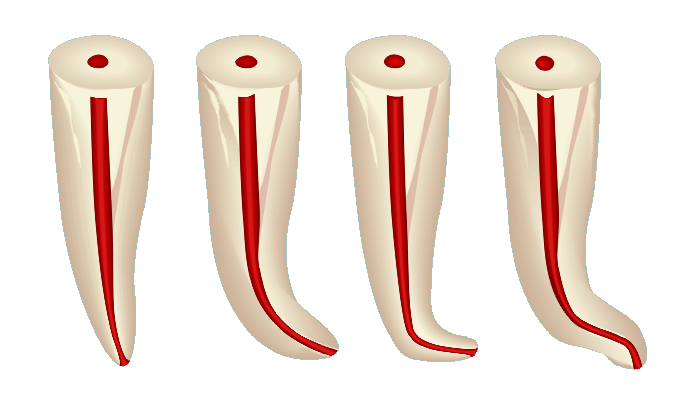Curved canals


Up to 90% of all root canals are curved to some degree. Canal curvatures are a challenge to preparation and can cause different kinds of technical complications (preparation of curved canals). Canals that curve in the mesio-distal dimension are usually easily detected in radiographs. However, many canals also curve in the bucco-lingual dimension, which can only occasionally be detected in radiographs. For optimal clinical results it is important to detect all curvatures in order to select the correct instruments and avoid complications.
The type of curvature dictates the ease or difficulty of instrumentation. Even curvatures with a long radius are easy to prepare with the right choice of instruments and techniques. Sharp curves with a short radius and S-shaped curvatures are always very demanding and easily result in transportation, ledges and even perforations.
Even up to 90% of all root canals are more or less curved. Canal curvatures are a challenge to preparation and can cause different kinds of technical complications (see preparation of curved canals). Canals that curve in the mesio-distal direction are usually easily detected in radiographic pictures. However, many canals curve also in the bucco-lingual direction, which can only occasionally be detected in radiographs. For optimal clinical results it is important to detect all curvatures in order to select the correct instruments and avoid complications.
The type of curvature dictates the ease or difficulty of instrumentation: even curvatures with a long radius are easy to prepare with the right choice of instruments and techniques, sharp curves with a short radius and S-shaped curvatures are always very demanding and easily result in transportation, steps and even perforations.